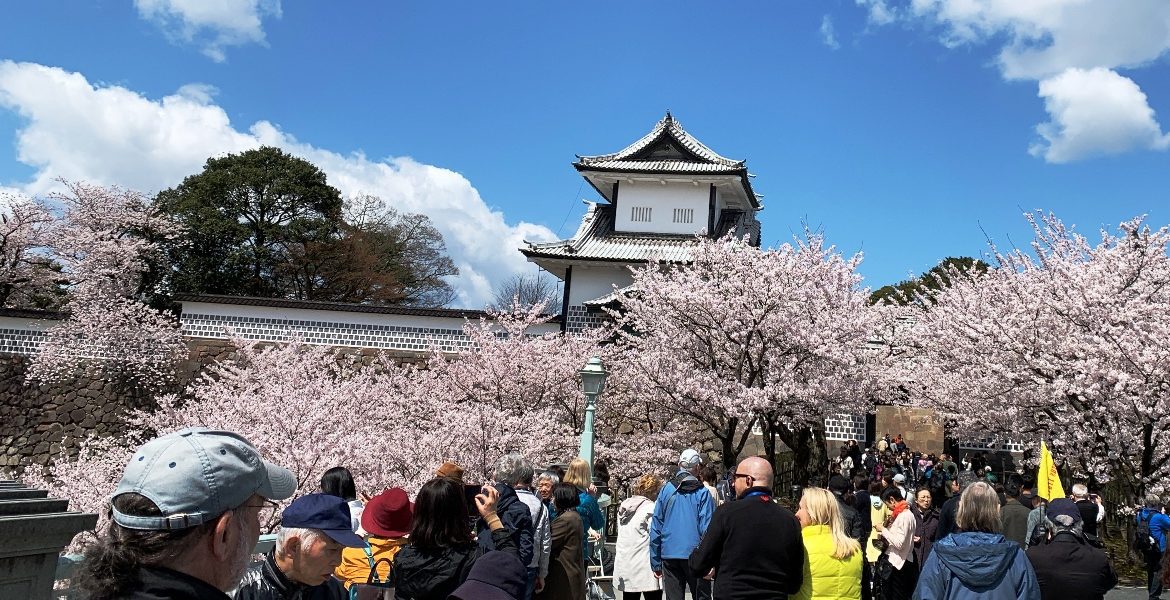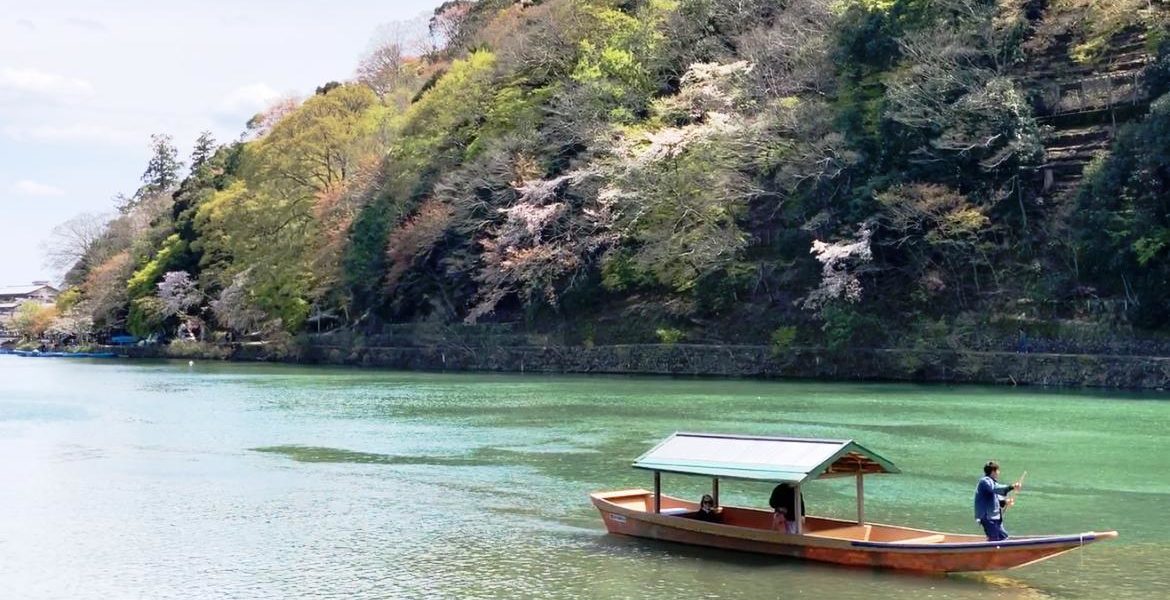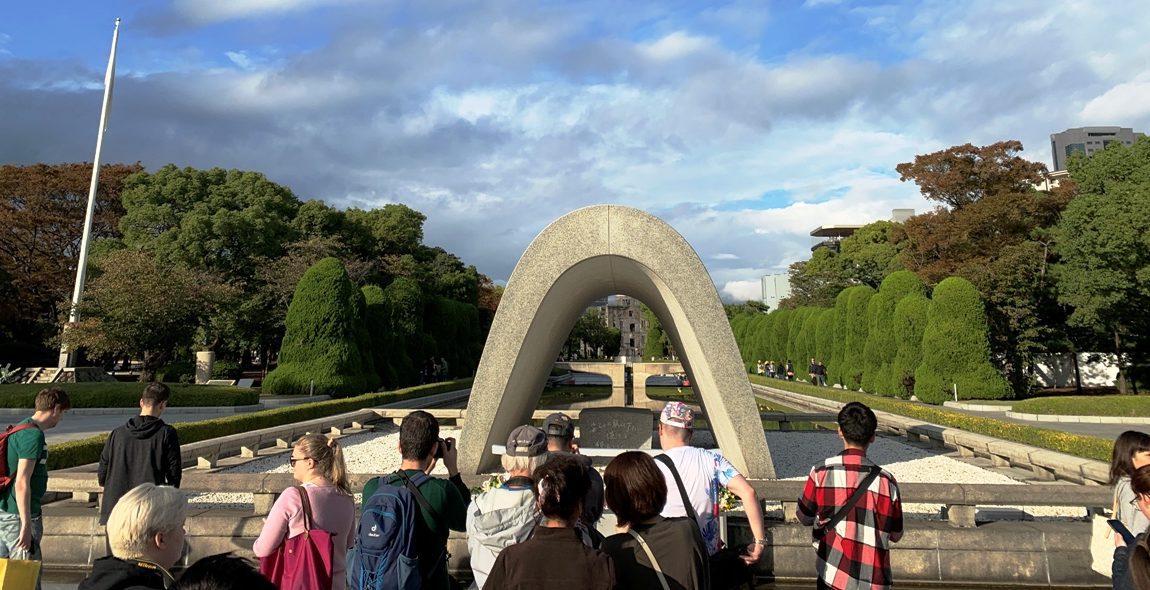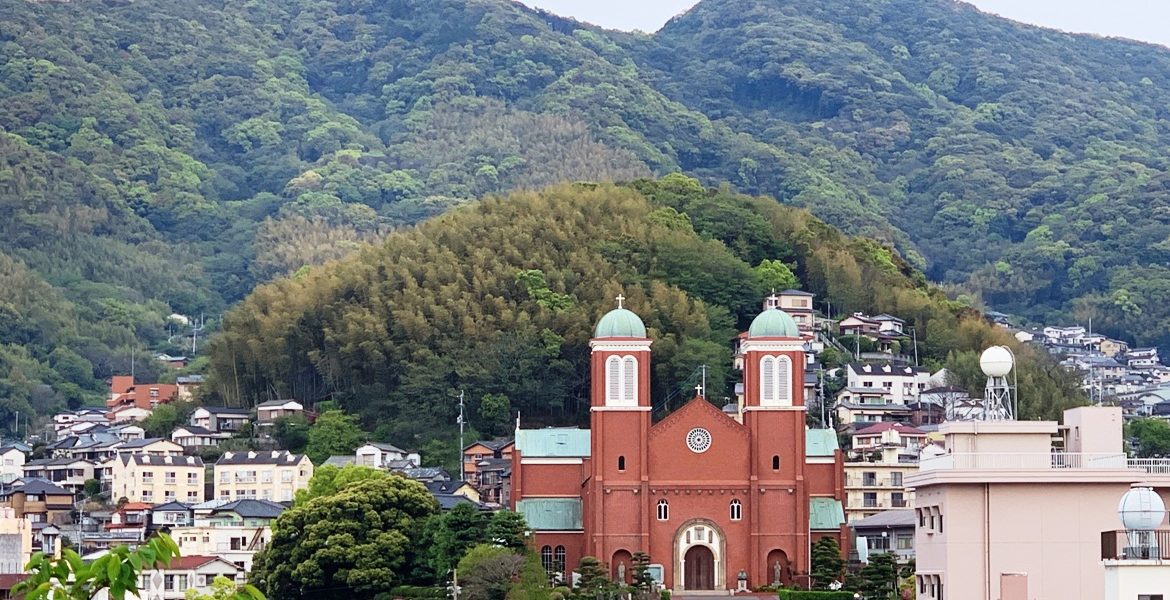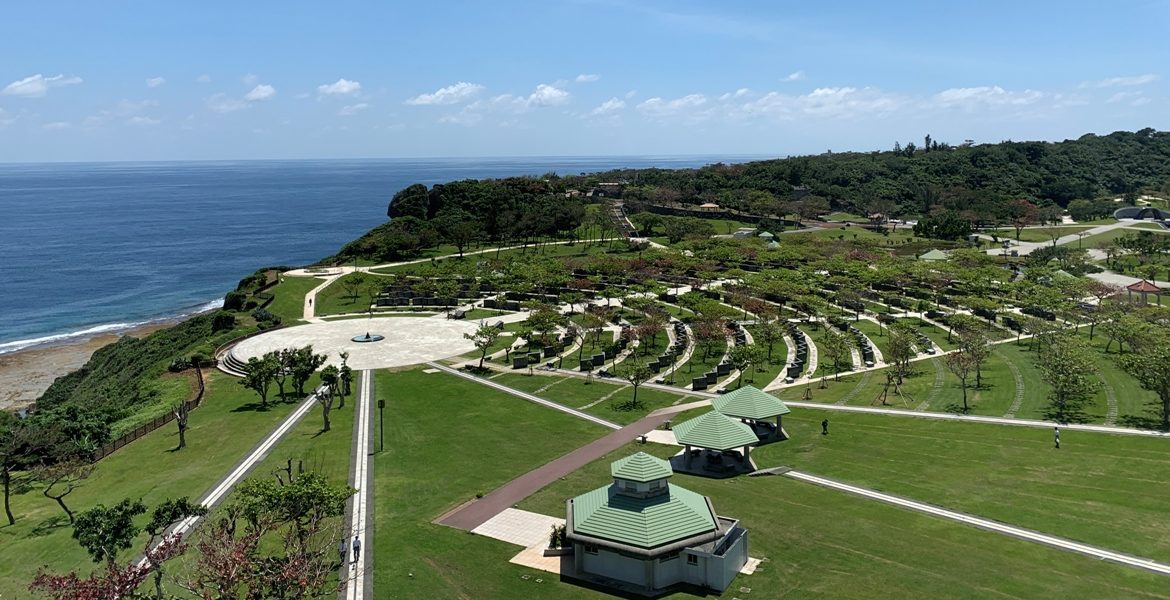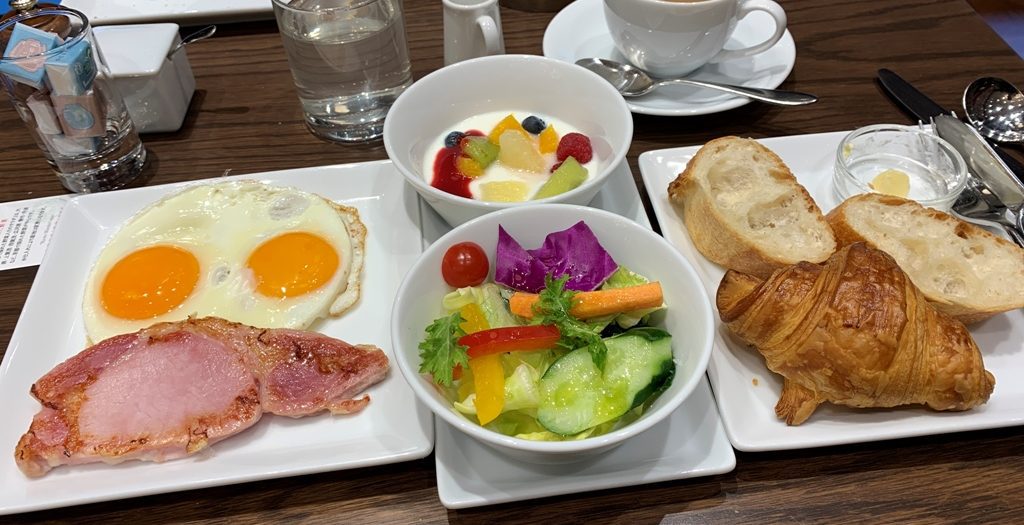Tokyo – Mt. Fuji – Hakone – Kanazawa – Takayama – Shirakawa – Kyoto – Nara – Osaka – Hiroshima – Miyajima – Nagasaki – Naha – Tokyo
Conducted by expert guides, this premium small-group tour is your quintessential introduction to the ancient land of the Rising Sun. The itinerary focuses on culture, history, good food and hiking.
Important Features
- Small group size (average 15, maximum 20)
- Expert professional guides
- No shopping stops
- Immersive cultural activities
- Quality Japanese and Western cuisines
- Special dinners featuring maiko performance & premium wagyu beef
- Luggage forwarding (Tokyo/Kyoto/Nagasaki, 1 piece per guest, 20kg max)
- Post-tour Taipei extension available
Meal Code: B = breakfast / L = lunch / D = dinner
18-day Classic Japan Tour Itinerary
Day 1/Mon: Departing Home City
The journey begins with your transpacific flight departing from a city of your choice. You’ll lose a day upon crossing the International Date Line.
Day 2/Tue: Arrival in Tokyo
Welcome to Tokyo!
Please make your way to the hotel on your own. Detailed up-to-date information on how to get to the hotel will be provided in the pre-trip update two weeks before departure. Private transfer can be arranged on request.
Day 3/Wed: Tokyo (B/L)
Tokyo, literally meaning “eastern capital” and officially named Tokyo Metropolis, is one of the most populous mega-cities in the world with a population of 14 million. Formerly known as Edo, the city has been the de facto seat of the Japanese government since 1603 when shogun Tokugawa Ieyasu chose the city for his headquarters. The shogun (general) was a hereditary commander ceremoniously appointed by the emperor but held real power over the country during the shogunate period between 1192 and 1867. Edo was renamed Tokyo after Emperor Meiji moved his seat from Kyoto in 1868 when the last shogun was forced to return power to the imperial court. The city covers an area of 2,187 square kilometres following the merger in 1943 of the city of Tokyo and Tokyo Prefecture.
Our full-day sightseeing begins at Senso-ji, the oldest Buddhist temple in Tokyo dating back to 628.
We then drive through ritzy Ginza shopping district to arrive at the plaza in front of the Imperial Palace (the palace itself is closed to tourists) for a stroll.
After lunch, we tour the grounds of the tranquil Meiji Jingu, a Shinto shrine dedicated to Emperor Meiji (1852 -1912) and his wife.
We end the day with a visit to the observation deck inside the Tokyo Metropolitan Government Building in Shinjuku. On a clear day, the visitor should be able to see the peak of Mount Fuji which is located about 84 km to the west.
Day 4/Thu: Tokyo – Mt. Fuji – Hakone – Tokyo (B/L)
We depart at 7:30 AM for a full-day excursion to Mt Fuji and Hakone.
Mt. Fuji, the highest mountain (3,776 metres) in Japan, is a two-hour drive from Tokyo. We stop by the Fujisan World Heritage Center to view the summit and learn about the history, formation and ecology of Mt. Fuji through exhibits and a short film. However, it is purely a matter of luck whether the summit is visible as Mt. Fuji is often shrouded in clouds. Our schedule does not include hiking the mountain – the trails are open between July and early September and it would take the average person at least six hours to hike to the summit even if one starts from the highest station at 2,305 metres above sea level.
We then proceed to Lake Ashi in Hakone for a short cruise across the lake. This is followed by a 10-minute cable car ride that transports us to the station overlooking the sulphur-spewing Owakudani Geothermal Valley. On a clear day, the cable car ride provides stunning views of Mt. Fuji and its surrounding mountain slopes.
We expect to arrive back at the hotel around 6:00 PM.
Day 5/Fri: Tokyo – Kanazawa (B)
Enjoy some downtime before boarding the express train (Hakutaka #561, 11:24/14:17) to Kanazawa.
On the shores of Sea of Japan, Kanazawa is the capital of Ishikawa Prefecture. The city has a population of 463,000 and is considered a jewel of Japanese tourism that is often overlooked by foreign tourists due to its relatively remote location. Travellers coming here are richly rewarded with the well-preserved Edo-period city, where the samurai, merchants, geisha, and daimyo (lords) all left their mark. Kanazawa is also part of the UNESCO Creative Cities Network as a City of Crafts and Folk Art.
After hotel check-in, walk around on your own and bask in the charm of this pedestrian-friendly city.
Day 6/Sat: Kanazawa (B/L)
Morning sightseeing begins at Omicho Market, Kanazawa’s largest fresh food market particularly well known for seafood.
From the market, Kanazawa Castle is just a few minutes away on foot. The restored castle was first originally built in 1580 for Maeda Toshiie, the fourth son of a minor samurai family who entered the service of a powerful daimyo at the age of 15 and quickly rose through the ranks. The castle was reconstructed multiple times due to fire damages throughout its history. The last time a fire destroyed the castle was in 1881. The Hishi Yagura turret, Gojikken Nagaya warehouse and the Hashizume-mon Tsuzuki Yagura turret were faithfully restored in 2001 to their 1809 form using traditional construction methods. Today’s pillars are constructed from the Japanese Hinoki cypress along with the use of the massive American cypress as ceiling beams. The castle’s distinctive whitish roof tiles are made of lead.
From the castle we walk across the road to Kenroku-en Garden which used to be part of the castle. One of the Three Great Gardens of Japan (Koraku-en in Okayama and Kairaku-en in Mito being the other two), Kenroku-en was developed from the 1620s to the 1840s by the Maeda clan, the daimyo that ruled the former Kaga Domain.
The restaurant for lunch is a 5-minute walk from the garden.
After lunch we visit Nagamachi, a historical preservation zone where the residents still go about their daily lives among the remnants of a bygone age. A highlight of the neighbourhood is the restored Nomura Samurai House, whose small but supremely exquisite traditional garden delights visitors from around the world.
We wrap up the day with a quick stop at Higashi Chaya Street. Higashi and chaya respectively translate to “eastern” and “tea house”. During the Edo Period, a chaya was found in designated entertainment district where geisha entertained male patrons with dance and music.
Day 7/Sun: Kanazawa – Takayama – Shirakawa-go – Kanazawa (B/L)
We set out at 8:00 for a full-day excursion to Takayama and Shirakawa-go.
Famous for its inns, sake breweries, food festivals and local folk art, Takayama (118 km southeast of Kanazawa) is a delightful town nestled amongst the Japanese Alps. Our sightseeing takes in an open-air market, Sanmachi Historic District, a sake shop and the historical Takayama Jin’ya – government house of the region during the Tokugawa shogunate period.
After lunch, we travel northbound in the direction of Kanazawa to visit Shirakawa-go (go in Japanese means township). Situated in a picturesque river valley, Shirakawa-go is part of the UNESCO World Heritage Site known as Historic Villages of Shirakawa-go and Gokayama. The village we visit in Shirakawa-go is called Ogimachi, the largest village in the township and the main attraction of Shirakawa-go. The village’s gassho-style large houses with steeply pitched thatched roofs are said to be the only examples of their kind in Japan.
Day 8/Mon: Kanazawa – Kyoto (B/L)
This morning we ride the express train (Thunderbird #16, 09:50/12:09) to Kyoto.
After lunch, we tour the historical Nijo Castle. This is the site that witnessed the commencement and ending of the Tokugawa shogunate (1600 -1868).
We then spend the rest of the afternoon exploring the famous Kinkaku-ji (Temple of Golden Pavilion). This is a Zen Buddhist temple and one of 17 locations comprising the Historic Monuments of Ancient Kyoto World Heritage Site.
Day 9/Tue: Kyoto (B/D)
Nicknamed “City of Ten Thousand Shrines”, Kyoto (literal translation: capital city) served as Japan’s capital for more than one thousand years before the imperial court moved to Tokyo in 1868 with the onset of the Meiji Restoration (1868 to 1912, a historical period associated with the emergence of Japan as a modernized nation). Kyoto is a scaled replica of the Chinese Tang Dynasty’s capital Chang’an, present-day Xi’an. The Tang Dynasty (618 – 907) was a golden era in Chinese history and a time when Japanese adoption of Chinese culture reached its peak. Kyoto today, with a population of 1.5 million, forms a major part of the Kyoto-Osaka-Kobe metropolitan area.
Morning sightseeing at Arashiyama (Storm Mountain) area takes in Tenryu-ji Temple and the Bamboo Forest. Located on the western outskirts of Kyoto, Arashiyama is famous for its immense natural beauty as well as its historical and cultural prominence due to the large number of well-preserved ancient Buddhist temples.
We spend the rest of the day touring the sprawling complex of Kiyomizu-dera and the famous geisha district, Gion, nearby.
Kiyomizu-dera is a Buddhist temple and part of the Historic Monuments of Ancient Kyoto UNESCO World Heritage site. Its veranda provides stunning views of the city.
Today’s traditional multi-course dinner (kaiseki) features performance by a maiko (geisha trainee).
Day 10/Wed: Kyoto (B)
Today is set aside for you to explore on your own.
Our recommendations include Fushimi Inari Shrine (good for hiking), Ginkaku-ji (Silver Pavilion Temple), Kyoto National Museum, and Kyoto Imperial Palace (subject to frequent closure).
Day 11/Thu: Kyoto – Nara – Osaka – Hiroshima (B/L)
We depart for Nara at 07:45. The 45 km drive to the magnificent Todai-ji temple takes about an hour. This ancient Buddhist temple is well-known not only for its splendid architecture and the huge bronze statue of the Buddha in the main hall but also for the 1,200 wild deer roaming freely on the grounds of the temple.
Nara is the capital city of Nara Prefecture and a former capital of Japan (710 – 794). With a population of roughly 370,000 and an area of 280 square kilometres, the city occupies the northern part of Nara Prefecture. Eight temples, shrines and ruins together with Kasugayama Primeval Forest collectively form “The Historic Monuments of Ancient Nara” – a UNESCO World Heritage Site.
Afterwards we continue on to Osaka, where we visit the historic Osaka Castle and Osaka’s legendary shopping and entertainment district known as Dotonbori. Situated at the mouth of the Yodo River on Osaka Bay, Osaka is Japan’s third most populous city (after Tokyo and Yokohama) and plays a significant role in Japanese economy. Osaka was once known as the “nation’s kitchen” because of its function as Japan’s rice trading centre during the Edo period.
We then transfer to the Shin Osaka Station for the late afternoon rail journey to Hiroshima (Sakura 563, 16:23/17:51).
Day 12/Fri: Hiroshima – Miyajima – Nagasaki (B/D)
Hiroshima, literally meaning ‘broad island’, is the capital of Hiroshima Prefecture and the largest city in the Chugoku region with a population of 1.2 million. Hiroshima is best known as the first city in history to be targeted by a nuclear weapon when the United States Army Air Forces dropped an atomic bomb on the city (and later on Nagasaki) at 8:15 a.m. on August 6, 1945, near the end of World War II. The highlight in Hiroshima, understandably but sadly, is the Peace Memorial Park which includes the Peace Memorial Museum, and the Atomic Bomb Dome that once served as the industrial promotion hall of the local prefect.
After a tour of the Peace Memorial Park complex, we proceed to Miyajima Island.
Officially known as Itsukushima, Miyajima is a small island (30 square kilometres, population 1,760) in Hiroshima Bay known for its forests and ancient temples. The seaside Itsukushima Shinto Shrine on the island is a UNESCO World Heritage Site and the “floating” torii gate in front of the shrine is the main reason for most visitors to come here.
We then travel to Nagasaki by train (Sakura 557, Relay-Kamome 41 & Kamome 41 Shinkansen; 14:52/17:22).
After dinner, we drive up to Mount Inasa to take in the spectacular night view of Nagasaki, something every visitor to Nagasaki should do.
Day 13/Sat: Nagasaki (B)
Located on the northwest coast of the island of Kyushu, Nagasaki is the capital of and the largest city in Nagasaki Prefecture with a population of 424,066 as of 2017. During the Tokugawa bakufu era (1603-1868) Nagasaki was the largest of the four Japanese ports allowed for international trade. The exposure to European influence, primarily Portuguese and Dutch, in those days certainly has left its mark on the city as evidenced by Nagasaki’s large number of Japanese Catholics and numerous European-style buildings throughout the city. Nagasaki also had the misfortune of being hit by an atomic bomb near the end of World War II, making it the second and last target of nuclear bombing in history.
Morning sightseeing begins at Dejima, the site of the Dutch trading post known as factory. Built on reclaimed land originally intended for the Portuguese, the 2-acre island was later offered to the Dutch, who used it from 1641 to 1854.
We then proceed to the Basilica of the Twenty-Six Holy Martyrs of Japan (also known as Oura Church), and adjacent Glover Garden built in 1863 for Thomas Blake Glover, a Scottish merchant who moved to Nagasaki as a young man, started a family with a Japanese woman and passed away in Tokyo at the age of 73.
The afternoon sightseeing takes place at Nagasaki Peace Park. Established in 1955 near the hypocenter of the atomic bombing on August 9, 1945, the park sits next to the Atomic Bombing Museum and the Peace Memorial Hall.
Day 14/Sun: Nagasaki – Fukuoka – Naha (B)
This morning we travel to Fukuoka by train (2 hours 11 minutes) for mid-day or late afternoon flight (1 hour 45 minutes) to Naha, capital city of Okinawa Prefecture. If a direct flight is available between Nagasaki and Naha as it was before the COVID-19 pandemic, that would be our choice. Consequently, sightseeing in Nagasaki or Naha may be arranged accordingly for today.
Day 15/Mon: Naha (B/L)
In 1609, at the beginning of the Tokugawa shogunate, the independent Ryukyu Kingdom was invaded by the Japanese domain of Satsuma and was forced to cede the Amami Islands and become a vassal of Satsuma. In 1879, the Empire of Japan annexed the entire Ryukyu archipelago and turned it into Okinawa Prefecture. The monarchy in the capital of Shuri, now part of Naha, was abolished and the deposed king Shō Tai (1843–1901) was made to relocate to Tokyo.
During the Battle of Okinawa near the end of the Pacific War, civilians on the island of Okinawa suffered tremendous casualties due to participation in war efforts forced onto them by the Japanese military. Okinawa was the bloodiest battle of the Pacific War. It was reported that the US government was so shocked by the high number of casualties sustained by the US troops (12,520 killed in action, up to 55,162 wounded) during the campaign that it decided to utilize the newly developed nuclear bombs to hasten Japan’s surrender.
Morning sightseeing takes in Shurijo Castle and Tamaudun Mausoleum.
After lunch, we drive 20 kilometres through picturesque countryside to Okinawa Peace Memorial Park. Located in the city of Itoman and direct to the south of Naha, the park was established in 1975 next to the “Suicide Cliffs” where the Battle of Okinawa ended on June 21, 1945. A key highlight of the park is the Peace Memorial Museum.
Day 16/Tue: Naha (B)
Today is put aside for you to explore the tropical island of Okinawa on your own. Inside the city of Naha, Shikina Garden and Okinawa Prefectural Museum & Art Museum are recommended. The local seafood restaurant scene is also worth checking out.
Day 17/Wed: Naha – Tokyo (B/D)
We travel back to Tokyo by air (2 hours 45 minutes) in the morning and transfer to the hotel on arrival. The balance of the day is at leisure. Feel free to ask your guide for recommendations if necessary. Enjoy a sumptuous farewell dinner tonight.
Day 18/Thu: Return Home (B)
The tour ends this morning. Transfer to Narita or Haneda airport on your own. Detailed information on Airport Limousine Bus and airport express train service will be provided in the final update.
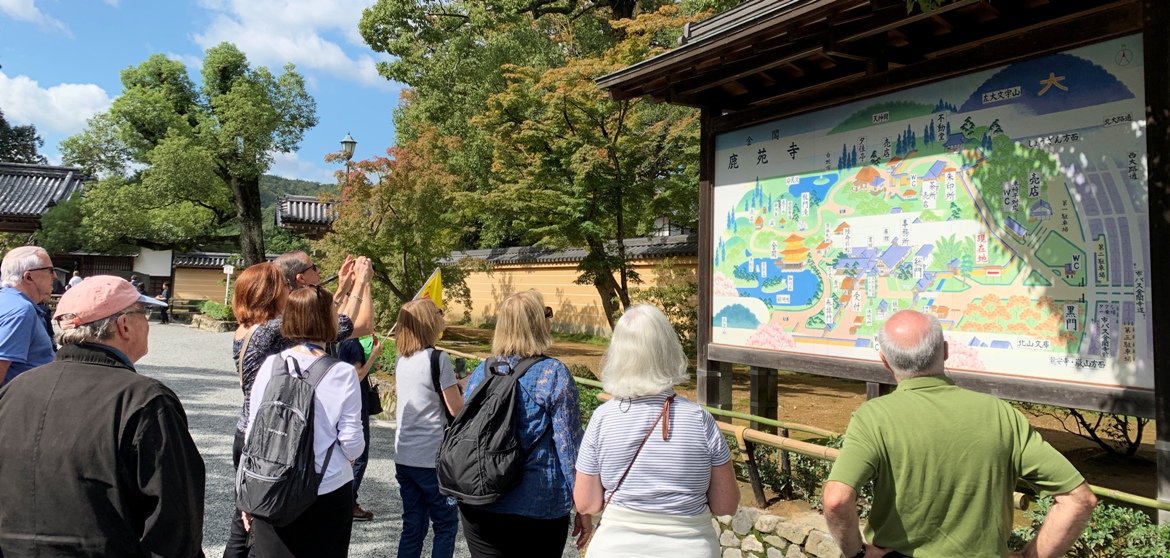
Hotel List
| City | Nights | Hotel* | Category |
| Tokyo – first stay | 3 | Tokyo Dome Hotel | Premium /4 stars |
| Kanazawa | 3 | Mitsui Garden Kanazawa or ANA Crowne Plaza Kanazawa |
Premium /4 stars |
| Kyoto | 3 | Hilton Garden Inn Kyoto (large Family Room) |
Premium /4 stars |
| Hiroshima | 1 | Hilton Hiroshima or ANA Crowne Plaza Hiroshima |
Premium /4 stars |
| Nagasaki | 2 | ANA Crowne Plaza Nagasaki | Premium /4 stars |
| Naha | 3 | JR Kyushu Hotel Blossom Naha | Premium /4 stars |
| Tokyo – second stay | 1 | Tokyo Dome Hotel | Premium /4 stars |
*Hotels are subject to change. Any substitution would of equal or higher category in similarly ideal location.
Dates and Prices
| Depart (Mon) |
Return (Thu) |
Land Only* CA$/US$ |
Single Supplement CA$/US$ |
| 2024 | |||
| 14-Oct | 31-Oct | $12,990/$9,625 | $4,253/$3,150 |
| 28-Oct | 14-Nov | $12,990/$9,625 | $4,408/$3,265 |
| 04-Nov | 21-Nov | $13,250/$9,815 | $4,928/$3,650 |
| 2025 Dates & Prices |
* Land Only price does not include international airfare. Contact us for a fare quote.
|
Tour price includes:
|
Tour price does NOT include:
See Terms & Conditions for more information. |
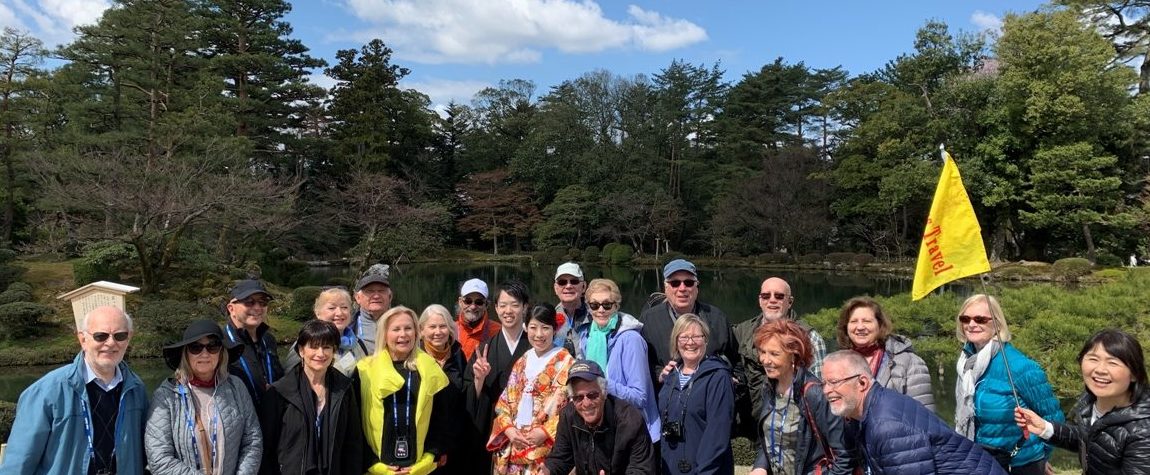
Passport & Visa
Your passport needs to have at least one blank visa page and six months validity at the end of the tour.
If you are a tourist from Canada, the US, the UK, Australia and New Zealand, you do not need a visa to enter Japan as long as your stay is within 90 days.
Immunization
Proof of vaccination against COVID-19 may be required. We will update you on this around your balance due date.
No certificate of any other inoculation is required. However, we do recommend vaccination against hepatitis A and suggest that you check out advice provided by Health Canada and the US CDC.
Travel Health
Japan is a very clean country, where tap water is potable. Some may prefer to boil tap water to get rid of the possible smell of chlorine. Always carry a roll of toilet paper and a bottle of hand sanitizer. In general, public toilets in Japan do not provide paper towels for hand drying; many of them have no electric hand dryers either. You should carry a small towel as many Japanese do when going out. Footwear is often forbidden when you go indoors at temples, historical sites and traditional restaurants; please bring proper socks to keep your feet comfortable.
Local Currency & Credit Card
Japan: yen (JPY)
Withdrawing cash from local ATMs after arrival remains our recommended method of currency exchange. Keep your inventory of local currency low. Your tour fare already covers all the expensive items. You only need some cash for incidentals and meals not included in the tour price. Credit cards are widely accepted across Japan. For transactions over $50, you are advised to use a credit card.
Travel Insurance – When to Buy
Your deposit will be kept as credit if you cancel for any reason. The transferrable credit has no expiration date. Therefore, it may be unnecessary to spend $30 to $50 on cancellation insurance just to protect the deposit.
However, purchase of trip cancellation & emergency medical insurance is strongly advised when your balance is due. If you don’t have proper coverage, the loss can be devastating in case of cancellation before or after commencement of the booked trip or in case of a serious medical emergency during the trip. Please ask us for premium quotes when your balance due date is near.
3-day Taipei Post-tour Extension

Day 17/Wed: Naha – Taipei (B)
You are flying to Taipei today while the rest of the group returns to Tokyo.
The morning or early afternoon flight from Naha to Taipei takes about 1 hour and 45 minutes. Private transfers at both ends are included. However, no sightseeing is scheduled for today.
Day 18/Thu: Taipei (B/L/D)
Taipei is the capital of the Republic of China (ROC) in Taiwan. ROC should not be confused with the People’s Republic of China (PRC) under the rule of the Chinese Communist Party. With a population around 2.7 million, Taipei is also the economic, educational and cultural center of Taiwan and one of the major hubs of air transportation in East Asia.
Our walking tour this morning begins at Chiang Kai-shek Memorial Hall, which is followed by the Presidential Palace, National 228 Memorial Park, and Taipei Botanical Garden. Be prepared to walk for 3-4 kilometres this morning.
We spend the afternoon exploring the National Palace Museum which houses a huge collection of national treasures removed from the Forbidden City in Beijing when the national government under the Nationalist Party (Kuomintang, KMT) fled to Taiwan in 1949.
The visit to the 508-metre-tall Taipei 101, a new symbol of the city, takes place after dinner.
Day 19/Fri: Taipei (B)
Free day to explore on your own.
We recommend Dr. Sun Yat-sen Memorial Hall and Dalongdong Bao’an Temple. The latter is an old house of worship that embraces Taoism, Buddhism and Confucianism all at the same time.
We also highly recommend a night market, such as the famous Shilin Night Market, for mouth-watering street food. The markets are crowded but nonetheless very safe. Everyone should be able to find something to their liking due to the abundance of choices available.
Day 20/Sat: Returning Home (B)
Your Taipei excursion ends this morning. Your transfer to the airport by private vehicle is included.
Prices per person based on double occupancy: US$1,096/CA$1,480
|
Tour price includes:
|
Tour price does NOT include:
See Terms & Conditions for more information. |

